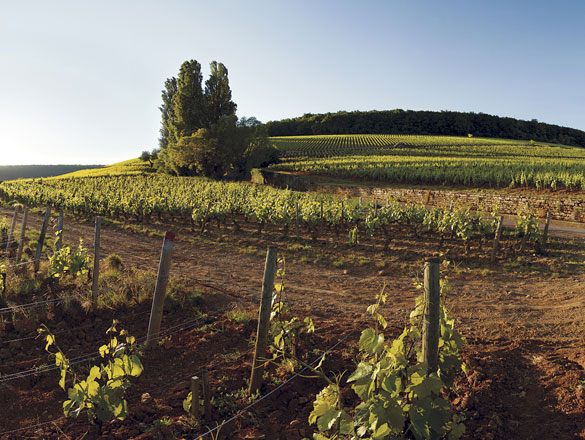

The vineyards of Bourgogne produce some great wines with a historical and international reputation. However, the region is not simply limited to its iconic appellations. In addition to its Village Premier Cru and Grand Cru AOCs, it also produces a range of wonderful Régionale and Village appellations to explore.
You will also find a full list of the Bourgogne’s Climats and lieux-dits on this page.
Check out the complete list of the 84 Bourgogne appellations.
However, your exploration has only just begun. Bourgogne wines have never before offered such high quality. Besides our range of internationally celebrated wines, try some of our lesser-known appellations where there are lots of surprises in store.
And for a fun way to find out more about the wines on offer, try out our “Which Bourgogne wine is right for me?” quiz, or check out Bourgogne Maps to take an interactive tour of the region.
Grand Cru appellation
VIGNOBLE DE LA CÔTE DE BEAUNE
31 juillet 1937
Whites only - Chardonnay.
Area under production*:
1 hectare (ha) = 10,000 m² = 24 ouvrées.
59.77 ha
Average annual yield**:
1 hectolitre (hl) = 100 litres = 133 bottles.
2,203 hl (292,999 bottles).
*In 2022 **5-year average, 2017-2021
Appellation Grand Cru of the Côte de Beaune region (Côte-d’Or).
The production area of the CORTON-CHARLEMAGNE appellation includes the area of the CHARLEMAGNE appellation, which, however, is not currently in use.
Producing communes:
CORTON-CHARLEMAGNE : Aloxe-Corton, Ladoix-Serrigny, Pernand-Vergelesses.
CHARLEMAGNE: Aloxe-Corton, Pernand-Vergelesses.
Some of the parcels, depending on whether they are planted with Pinot Noir or Chardonnay grapes, may, at the grower’s discretion, claim the appellation CORTON for red wines or CORTON-CHARLEMAGNE for whites. On the label, the words GRAND CRU must appear immediately below the name of the appellation.

When young, Corton-Charlemagne is pale gold in colour with green highlights.
As it ages, the colour shifts towards yellow or amber. The bouquet, delicate in the extreme, features buttery notes of baked apple, citrus fruits, pineapple, lime, bracken, juniper, cinnamon, and flint. Honeyed notes are frequently present. The older vintages (25-30 years) reveal leather and truffle. Both the glass and the palate are filled with its powerful exhalations. Corton- Charlemagne is an astonishing demonstration of what the Chardonnay grape is capable of in terms of richness, power, concentration, distinction and balance. Rarely do we see such a perfect synthesis between grape variety and terroir.

The manner in which Corton-Charlemagne achieves a perfect balance in the mouth between its remarkable acidity and its rounded opulence demands refined and delicate dishes which nonetheless possess real aromatic power. The natural candidates would include foie gras, whose bitterness would be supported by the wine’s forceful minerality, as well as more conventional classics such as good-quality crustaceans (lobster, crawfish, crab) whose strong but delicate flesh harmonizes with the wine in a spectacular fashion. Poultry or veal in white sauces would also do the wine justice, as would blue cheeses.
Serving temperature: 12 to 14°C.

Situated almost on the border between the Côte de Nuits and the Côte de Beaune, and at altitudes between 280 and 330 metres, much of the Corton- Charlemagne appellation faces south-west (which is uncommon in these parts). The Hill of Corton, high and rounded, has vineyards on three sides corresponding to the three villages of Aloxe-Corton (Climat: Le Charlemagne), Pernand-Vergelesses (Climat: En Charlemagne) and Ladoix-Serrigny (Climats: part or all of Pougets, Corton, Languettes).These vineyards were a gift of the Emperor Charlemagne to the religious community of Saint-Andoche de Saulieu in the year 775. It remained in their possession for a thousand years, and today still celebrates, at least in name, their illustrious benefactor. The appellation is made up of two Climats, Charlemagne and En Charlemagne, plus some neighbouring plots. Unlike the Corton appellation, the name of the Climat is not mentioned on the label. Its Grand Cru appellation dates from July 31, 1937.

The Corton-Charlemagne appellation occupies the highest portion of the Hill of Corton where the gradients are steep (20-23%). The hill itself offers an exemplary geological section through the younger (145 million years) Jurassic strata which lie between Ladoix-Serrigny and Meursault. The colour of the clay-rich marly soils varies from yellow through ochre to brown. Limestone alternates with marls beneath a thin cover of rendzinas. At mid-slope the mainly red wines of the Corton appellation grow on soils appreciably different in character.
